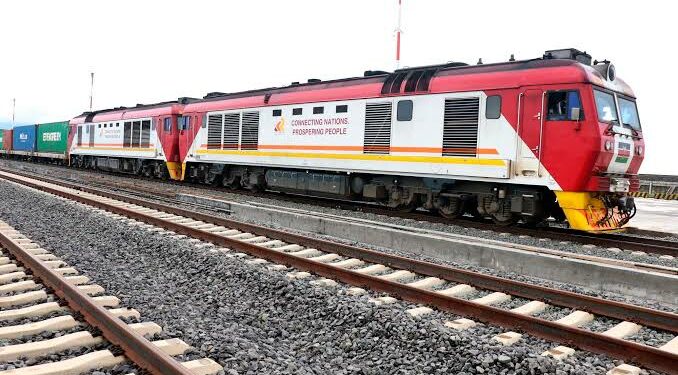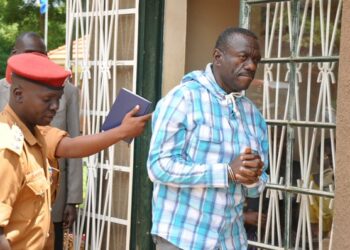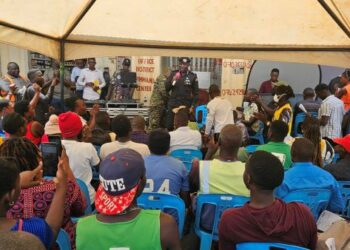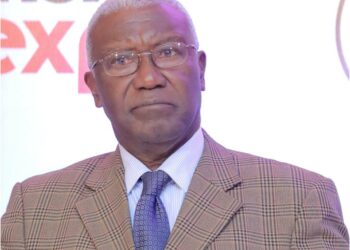A serious hunt is on, spearheaded by governments of Kenya and Uganda, for funds to complete part of the Standard Gauge Railway (SGR) project, connecting Naivasha and Kampala via Malaba.
The Ministry of Works and Transport in Uganda on Thursday May 18th, released a statement, saying efforts are underway to find an alternative source of funds from Europe to complete the high-speed railway project.
“Sourcing for alternative financing from Europe is on-going,” the Transport Ministry said on Thursday, without providing details on which specific funder in Europe, authorities in Kampala are counting on for the monies.
This positive development implies that the 273-kilometre line whose construction had been put to a halt will be revived. The line will stretch from Uganda’s capital Kampala to Malaba border with Kenya, where it is expected to link with Kenya’s own Standard Gauge Railway which connects to Mombasa.
The Malaba-Kampala section, with associated train and railway yards measuring up to 273 kms is budgeted to cost $2.3 billion. The entire SGR construction on the Ugandan side is expected to last 42 months.
While talking to the East African, a senior Kenyan government official whose names were withheld said that loan from China has remained high and Kenya is not willing to service any new loans from Beijing.
“We have been having talks with China, but it seems funds are not coming at the terms we were proposing. This cannot hold our project to ransom and we have to continue with our plan to build SGR to connect Naivasha and Kampala,” said the senior official.
With Uganda’s revelation on Thursday that construction of its much delayed $2.2 billion SGR would commence this year, Kenya’s ambitions to extend the rail from Naivasha to Kisumu, then to Malaba have been invigorated.
The news has been greeted with immense excitement from importers and exporters in Uganda, who had for long suffered with huge transportation costs associated with road transport.
Uganda had in 2015 entered into an agreement with Chinese firm China Harbour and Engineering Company Ltd to implement the project on condition that the firm helps secure funds for the railway from the Chinese.
Realizing that talks with China were heading nowhere, Uganda early this year terminated the agreement and instead commenced negotiations with the Turkish firm Yapi Merkezi to undertake the project.
“The Government of Uganda is in advanced stages of engaging Yapi Merkezi to undertake development of the SGR eastern route. Plan is to commence construction this calendar year,” the ministry of works and transport stated.
Uganda is counting on the railway to boost speed and lower the cost of transporting exports such as coffee and tobacco. It currently relies on costly and slow road links and a century-old narrow gauge rail line built by former colonial power Britain, which operates at snail speeds.
A standard gauge railway (SGR) is a rail line system whose distance between the rails ranges from 1420 to 1,460 kms. The system is faster, with a top speed of 200km/hr, carries more cargo and is more stable than the Metre Gauge Railway network.
A 40 ft container costs $3500 from Mombasa to Kampala by road compared to $1500 by rail when the standard gauge is complete, in just a day.
While some countries in the East African region like Kenya, Ethiopia and Tanzania have constructed part of this modern railway system, Uganda is yet to begin.
Northern Corridor Transit and Transport Coordination Authority (NCTTCA) Executive Secretary Justus Omae told the East African that partner states will meet in June this year, to discuss intermodal transport, and SGR funding will be top on the agenda.
“We have to improve our SGR line and connect it with other states and in our next month intermodal meeting with different states, the agenda of joint funding of our projects is among what is lined up for discussion,” said Omae.
On his trip to Beijing in 2019, then Kenyan President Uhuru Kenyatta failed to convince Chinese authorities to grant him $3.68 billion to fund the third phase of his signature SGR project, a critical segment of the Northern Corridor project, which if had been secured would extend the SGR line from Naivasha in Central Rift Valley to Kisumu, and on to the Malaba border from where Uganda would take over construction to Kampala and beyond.
If the June meeting fails to reach agreement for joint SGR project funding, Nairobi will have to wait longer before the construction of the modern railway.
The Kenyan government failed to allocate funds in the next three years to the transport ministry to extend the SGR beyond Naivasha to Kisumu and finally Malaba.
However, analysts say the SGR will breed more problems for Uganda than the benefits, hiking the country’s debt burden due to fighting on three fronts, that is to say; servicing loans for EACOP, SGR and those of other projects.
Do you have a story in your community or an opinion to share with us: Email us at editorial@watchdoguganda.com













